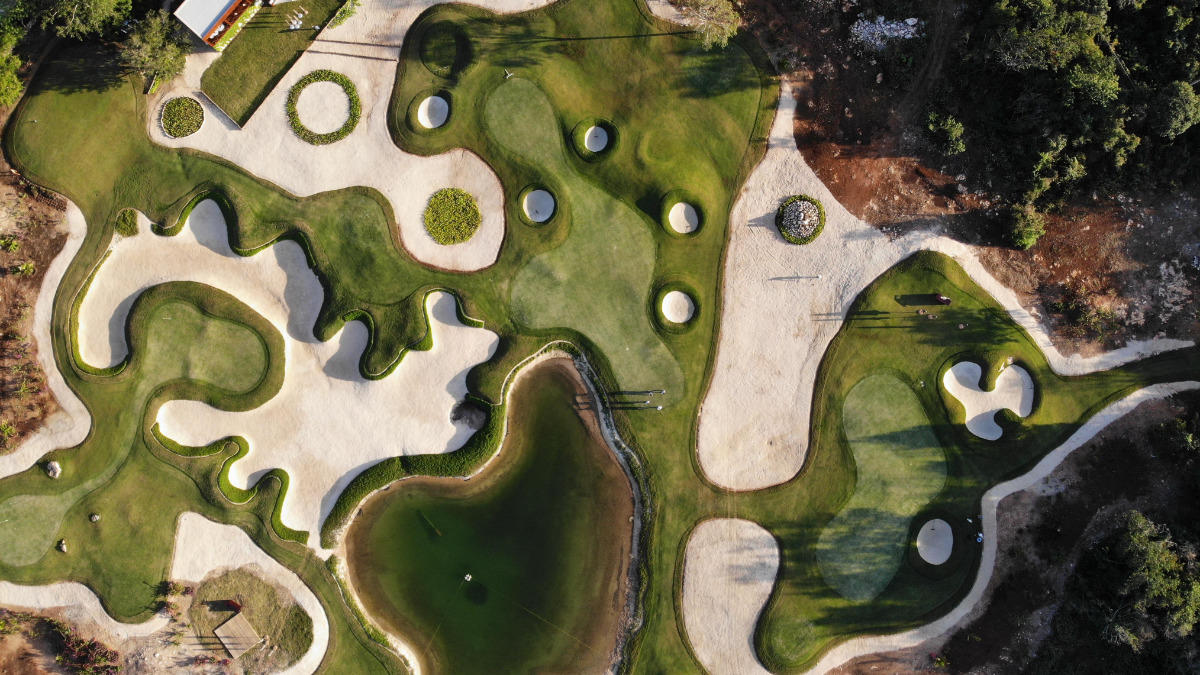- Homepage
- News and Features
- Architects offer advice on making your golf course future proof
Architects offer advice on making your golf course future proof

The world we live in is evolving and change is inevitable.
Some changes are enforced, some are advisory and others – like the COVID-19 pandemic – seem to come from nowhere, without warning.
So, what can a golf club do to make its courses ‘fit for the future’?
The R&A’s industry‑wide initiative, Golf Course 2030, aims “to steer the sport to mitigate for the challenges and take advantage of the opportunities these issues present”. With a focus on the impact of changing environmental and regulatory factors on golf courses, Golf Course 2030 highlights how golf clubs and their courses will be affected in the future by external factors and, if they are to prosper, clubs must prepare to embrace the changes ahead and build greater resilience.
How this is done is the ultimate challenge and is one that golf course architects are well placed to help solve.
The successful clubs of today will be the dinosaurs of tomorrow if they do not embrace change.
Working with a golf course architect
When it comes to creating a long‑term vision for a golf club to be ‘fit for the future’, clubs know their courses best and what their players are looking for. However, a golf course architect brings an important external perspective and the experience of what is effective. The magic to making this vision come alive happens when a golf course architect is engaged and then has the opportunity to listen to and work with the professionals at the club – the course managers, greenkeepers, general managers and golf professionals – to determine the most efficient changes for the courses.
“It is when this group works closely with the club’s long‑term vision in mind that efficient changes to the course are found,” said Christian Lundin MEIGCA.
Christoph Städler MEIGCA, European Institute of Golf Course Architects (EIGCA) president, added: “Experienced golf course architects help unlock the potential within a club by identifying improvement possibilities or substantial savings.”
Increasingly asked to work with limited budgets, architects will marry small budgets with a club’s usually large expectations by making the most of what it has to appeal to diverse groups. »
After analysing a club’s strengths and weaknesses, an architect will typically develop course development concepts and then, depending on the club’s requirements, provide advice on a range of issues. Deliverable as a report or in graphic form – as a masterplan, for example – the architect will detail ideas for, and recommendations of, simple improvements, or a full re‑design to championship standard, and all levels in‑between, depending on the pre‑agreed scope of work.
“Open‑minded discussions between golf course architect and club staff are when insightful changes are found, often small, which do not require a redo of a bunker or a green,” added Christian. “Sometimes changes to mowing lines, or sand lines in bunkers are all that are needed.”

Recommendations for how to make a golf course ‘fit for the future’
The difference between a club closing, surviving or prospering are the decisions made today about the changes to put in place to be ‘fit for the future’.
“Clubs need to rethink and reimagine what their courses could be,” said Steve Ritson MEIGCA.
Golf is not just 18‑holes on a championship standard course. With the majority of players being recreational and looking for enjoyment and health benefits, the sport needs to appeal to a much larger and wider audience of people of all playing standards and provide the facilities and environment in which they want to play.
There is a myriad of options of what to consider for the future of a course. From doing nothing and maintaining business‑as‑usual to building in resilience to cope with unforeseen disruption such as extreme weather, enforced closure (as seen in some countries with the COVID‑19 pandemic) or limited resource availability.
What next?
Being ‘fit for the future’ does not mean making big and expensive changes as sometimes incremental changes are all that are needed. What it does mean is thinking ahead, sometimes out of the box, and putting in place the changes needed to be ready for what you anticipate the future will bring.
Taking the first step on the journey to be ‘fit for the future’ is difficult and perhaps even daunting, but engaging the services of an experienced golf course architect will make the process easier and more effective, in the short and longer term.

10 things to consider to make your course futureproof:
Clientele – what do your customers want?
- Members only, green fee players only, or a blend of both
- Shorter playing times
- Increased 9‑hole play
Competitors – what do other clubs in the region offer?
- Several sets of tees
- Improved practice facilities
- Recreational facilities to attract families
Practice facilities – how can you help players improve their skills?
- Enhanced practice range
- Short game and putting greens
Increased shot distances
- Improved clubs, shafts and balls make the position of many fairway bunkers obsolete for longer hitters. Consider a forward relocation of bunkers or backward relocation of tees
Shorter courses
- Appeal to higher handicap players with a variety of tees for all playing standards
- Cater for beginners and families away from the main course
- Make playing fun to develop skills and confidence
Course vegetation
- Greater use of natural grasses in out of play areas, drought tolerant fairway grasses, natural bunker surrounds, develop wetlands or woodland which require less maintenance
- Removal of excessive shading on greens and tees by overgrown trees
- Reduce tree cover on lines of play to speed up play and allow air circulation to promote turfgrass health
Maintenance
- Reduce the area of greens as they require intensive maintenance and large amounts of time, fertiliser and water
- Naturalise some out of play areas to reduce the amount of rough to maintain
Climate change (see The R&A’s Golf Course 2030)
- Utilise water‑saving irrigation technology
- Introduce a sustainable source of water to reduce the effect of hotter and drier weather
- Measures to reduce the risk of coastal flooding
- Introduce more drought‑tolerant grass species
- Ponds and lakes to collect and recycle water within the course, rather than pay for abstraction or costly mains water
Resources (see The R&A’s Golf Course 2030)
- Water, pesticides, fertilisers, sand, energy, labour, etc are all likely to become scarcer and cost more
Regulation (see The R&A’s Golf Course 2030)
- The impact of regulation on resources varies, dependent on the course and management of its different areas.
Continue the conversation: EIGCA on Twitter
BIGGA and the EIGCA work together to provide support and guidance for members of both associations. This article was originally featured in Greenkeeper International, the monthly journal of BIGGA.
Author

